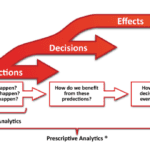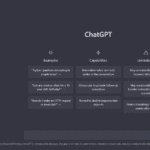Understand what customer tiering is and why it’s important
Customer tiering divides customers into groups, or tiers, based on their value to the company. The most common way to do this is to use a metric like a Lifetime Value (LTV) or Customer Acquisition Cost (CAC). Customers with a high LTV or low CAC are typically placed in the higher tiers, while those with a low LTV or high CAC are placed in lower tiers.
There are several reasons why customer tiering is essential:
- It allows companies to focus their resources on their most valuable customers. This is especially important when budgets are tight, and every dollar counts.
- It helps companies to understand their customers and their needs better. This understanding can be used to create targeted marketing campaigns and product offerings that are more likely to resonate with each customer group.
- Customer tiering can help companies to identify potential issues or problems early on before they have a chance to cause significant damage.
In short, customer tiering is a helpful tool for any business that wants to make the most of its resources and better understand its customers. By placing customers into different tiers, companies can more easily identify their most valuable customers and focus their efforts on retaining them.
Identify your target market and understand their needs
As a business owner, it’s essential to identify your target market and understand its needs. Only then can you create products or services that meet their requirements. There are many ways to identify your target market. First, consider your existing customer base. Who are they, and what do they need? You can also look at demographic data, such as age, income, and location. Once you’ve identified your target market, you need to understand their needs. What are they looking for in a product or service? What are their pain points? Understanding these needs will help you create products or services that meet their expectations and address their concerns. By taking the time to identify your target market and understand their needs, you can create products or services with a real chance of success.
Create different levels of service that cater to the diverse needs of your target market
Different customers have different needs, and it’s essential to cater to them to keep them happy. One way to do this is by offering different levels of service. For example, if you’re running a hotel, you might offer basic, standard, and premium rooms, each with various amenities and price points. This way, customers can choose the best option for their needs and budget. Another vital thing to remember is that your target market may change over time. As your business grows, you may need to add new services or adjust your existing offerings to meet the changing needs of your customer base. By being flexible and keeping your finger on the pulse of your target market, you can ensure that you always offer the services they need.
Train your staff on how to provide excellent customer service for each tier
A company’s success often depends on the quality of its customer service. Good customer service can help to build brand loyalty and attract new business, while poor customer service can damage a company’s reputation and lead to lost customers. When providing excellent customer service, it is vital to ensure that all staff members are appropriately trained. This training should cover the fundamentals of good customer service, such as handling customer inquiries and complaints, providing personalized service, and resolving conflict. In addition, it is also essential to train staff on how to offer different levels of customer service for different tiers of customers. For example, VIP customers should receive a higher level of service than general customers. Companies can ensure that they provide the best possible customer service by providing proper training for all staff members.
Implement a rewards system for customers who stick with your company and continue to upgrade their service level
Implementing a rewards system is a great way to show your customers that you appreciate their business. By offering discounts or other incentives, you can encourage customers to stick with your company and continue to upgrade their service level. This can help to build customer loyalty and keep your business thriving. In addition, a rewards system can also help to attract new customers. By offering an incentive for signing up, you can increase the chances that potential customers will choose your company over others. Finally, by implementing a rewards system, you can show your customers that you value their business and help to keep your company competitive.
Measure success by tracking customer satisfaction and loyalty over time
Every business wants to be successful, but what does that mean? While there are many ways to measure success, customer satisfaction and loyalty are two of the most critical indicators. Customer satisfaction can be tracked in many ways, such as through online surveys or customer service call logs. Loyalty can be measured by repeat business or by the amount of referral business a company receives. By tracking these indicators over time, businesses can get a good sense of whether they meet customer needs and whether their products and services are well-received. In addition, this data can help companies to identify trends and make necessary adjustments to ensure continued success.
By understanding your target market, you can create tiers of service offering the proper support and benefits for each group. You increase customer loyalty and satisfaction by providing excellent customer service to each tier. And by tracking these metrics over time, you can see whether your efforts are paying off in terms of increased sales and customer retention. Have you tried using customer tiering in your own business? What were the results? Let us know in the comments below.











